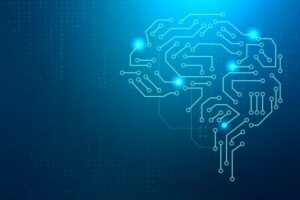With the development of technology, the number of areas of our life that are becoming automated is increasing. As a result, more and more responsibility is placed on computer systems. The risks increase with the growth of responsibility and the number of important tasks. One of the urgent problems is the failure of computer systems due to the actions of intruders – hackers or malicious software.
Anyone can become a victim of hacker attacks, and the damage from them reaches billions of dollars. Manufacturing, the commercial sector, government and educational organizations, healthcare institutions, utilities, etc., suffer from demanding programs. Often such attacks are targeted.
Criminals actively use means of cyberattack automation. Artificial intelligence (AI) allows them to optimize their activities. Thus, AI is used to pass CAPTCHAs, crack passwords, find system vulnerabilities, send messages with phishing links that contain viruses or ransomware, etc. To cope with the growing volume of attacks, it is necessary to start actively implementing machine learning (ML) technologies for detecting and predicting cyber threats, as well as responding to them in real time.
Read below in more detail about machine learning technology and the key possibilities of its application in cybersecurity.
Machine Learning Definition
Machine Learning is a complex field of knowledge on the border of AI theory, signal theory, mathematical statistics, and optimization methods. There are two types of ML:
- Inductive (when the machine learns to identify patterns in experimental data). The result is classification systems;
- Deductive (when the knowledge of human experts is formalized and transferred to the automated machine). The result is the creation of expert systems.
Machine learning usually includes a certain set of examples, observations, and reactions to these observations. The main task is constructing models to describe the available data as efficiently as possible and make reliable predictions.
ML applications are expanding daily, including industrial and finance sectors, deep learning, neural networks, personality recognition, cybersecurity, IT, etc. The ML solutions provided by VueJS developers are more popular today than ever. Try hiring vue js developers and see for yourself. Dynamic user interfaces with rich UI are waiting for you. As for cybersecurity, the opportunities for using machine learning technology are also extensive. Read the following sections to learn more about it.
The Role of ML in Cybersecurity
Machine learning capabilities can be used for a variety of purposes in the cybersecurity field.
Data Classification
When data is classified, data points are separated into certain categories according to established rules. This marking process is essential to active security measures such as attack profiling.
Data Clustering
When data is clustered, the values filtered out during the classification are combined into clusters with common or atypical characteristics. It can be successfully used when considering and analyzing data on attacks for which the system is not yet prepared. Clusters help identify how attacks were conducted, what vulnerabilities were used, and what data was accessed.
Tips for Further Actions
Tips for further actions increase the effectiveness of machine learning-based proactive security. They are derived based on behavioral patterns and previously made decisions and offer the most rational action course of action. It should be noted here that recommendations are not a conscious decision, as in the case of fully autonomous AI. It is rather a type of adaptive system that builds logical relationships based on existing data points. Such useful tools can significantly assist in responding to various cybersecurity threats and managing risks.
Identifying Opportunities
Identifying opportunities makes it possible to obtain completely new results based on historical and new datasets. In contrast to the tips for further actions, the focus here is on determining the probability of the reoccurrence of previous states of the system. Thus, identification can be effectively used to preliminary investigate vulnerabilities in the company’s systems.
Forecasting
This MO-based process is considered one of the most advanced today. By evaluating various existing datasets, possible outcomes are usually identified. Forecasting can mainly be used to build threat models, prevent fraud, and protect against data leakage. It is the foundation of many Intelligent Endpoint Solutions.
ML in Cybersecurity: Application Examples
Here are several examples that highlight the critical role of ML in cybersecurity:
- Classification of data according to the degree of confidentiality in order to comply with the rules for their processing;
- Security profiles based on data about system activity and user behavior;
- Behavior-based blocking of bots, etc.
Conclusion
Therefore, the opportunities for using ML are pretty large. It perfectly copes with monotonous work, such as revealing patterns in data and checking them for compliance with templates.
Such monotonous activities tire employees, reducing their productivity. While the human is still responsible for interpreting the data, ML helps bring it into an analysis-ready form. And this is just one of the main possibilities of its application. Others include detecting and preventing malicious attacks, fixing bugs and vulnerabilities, improving the efficiency of human analysis, and so on.







